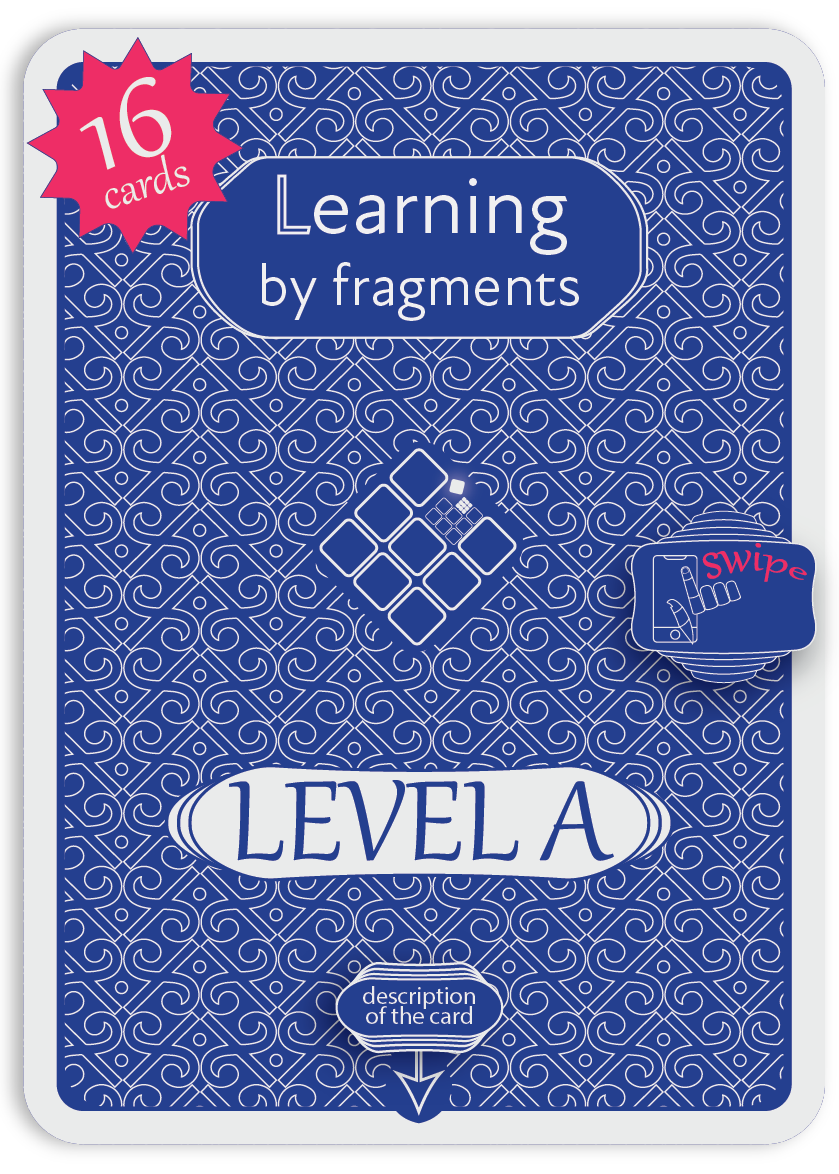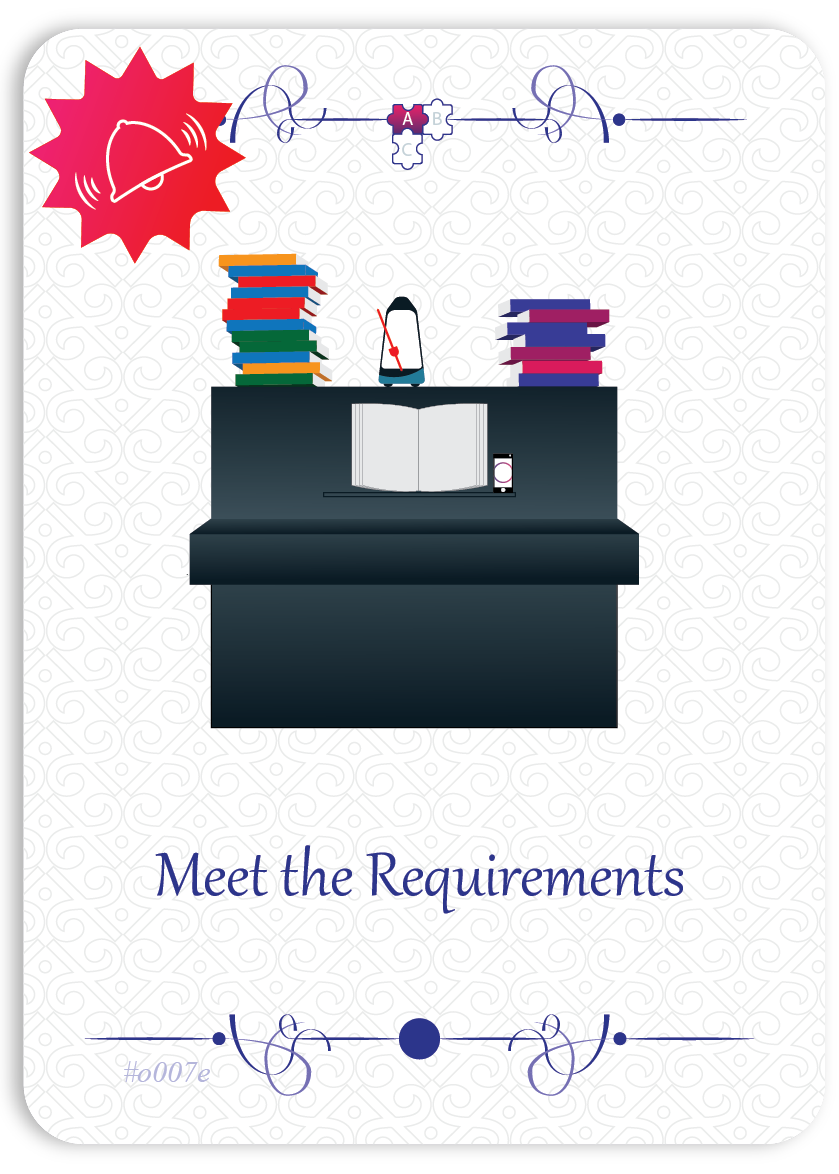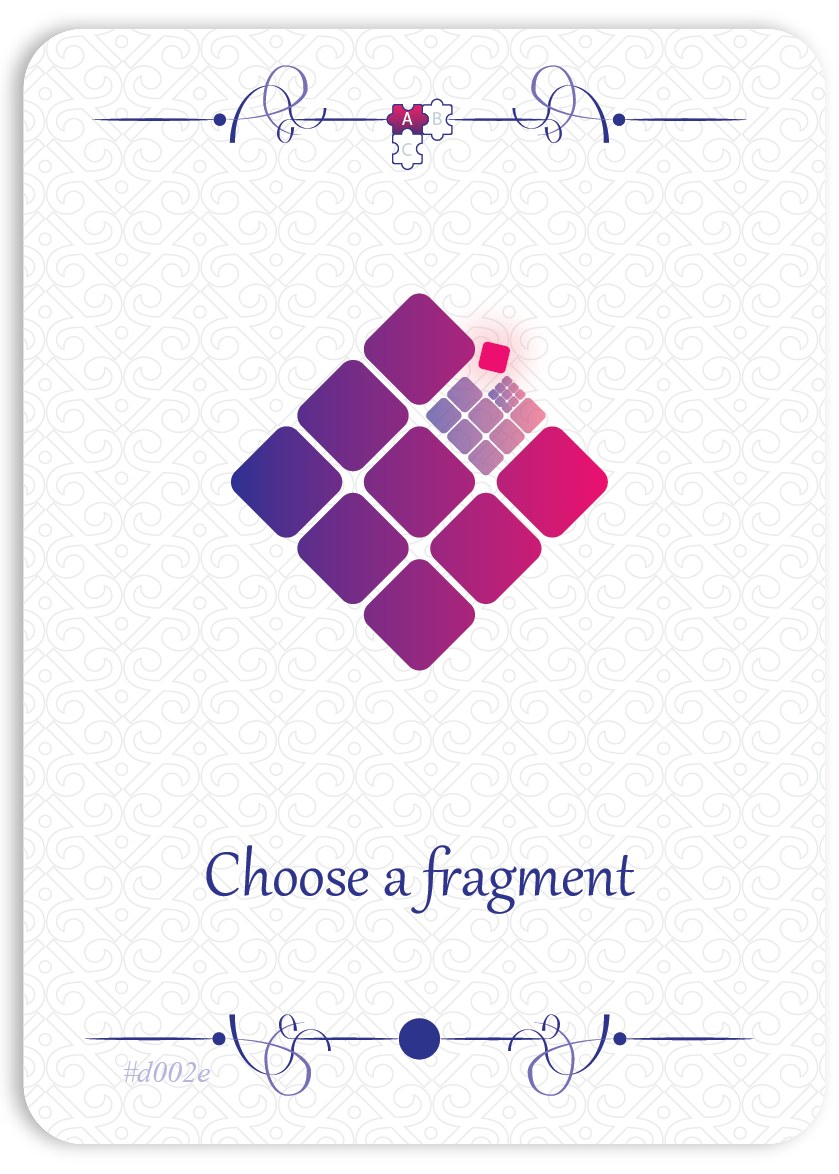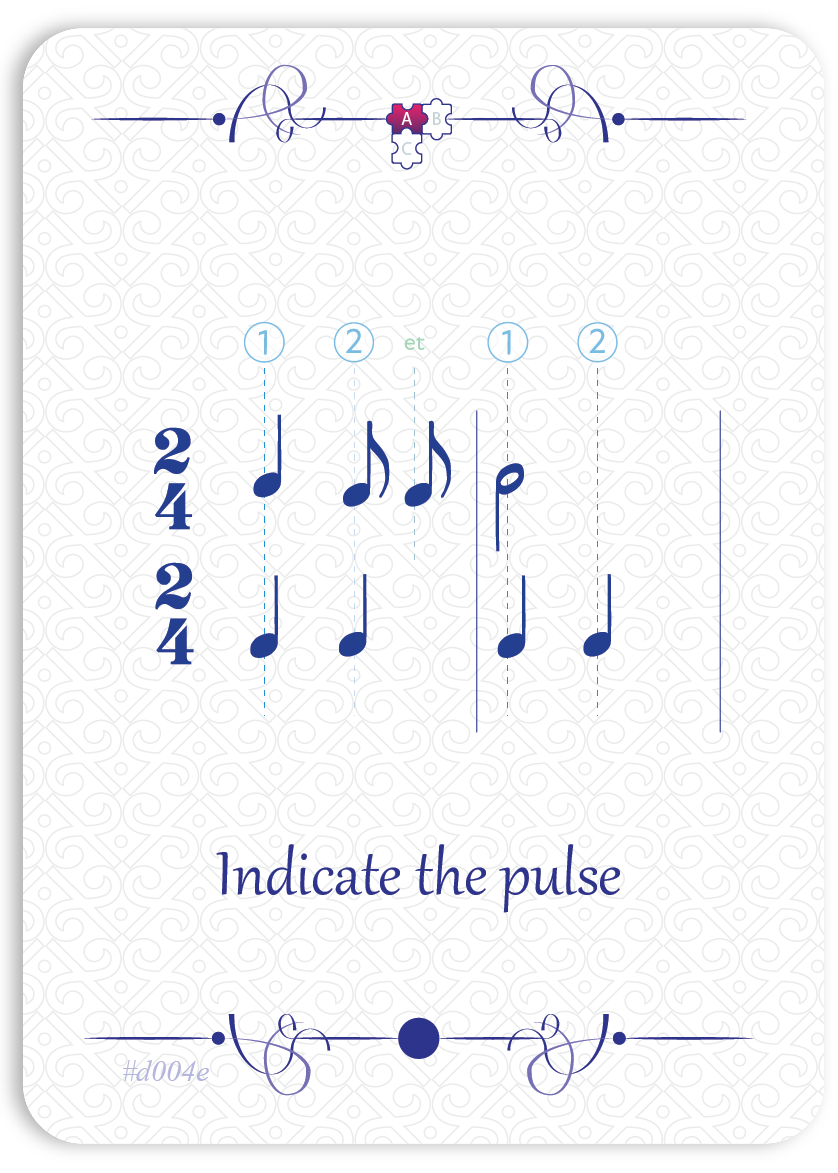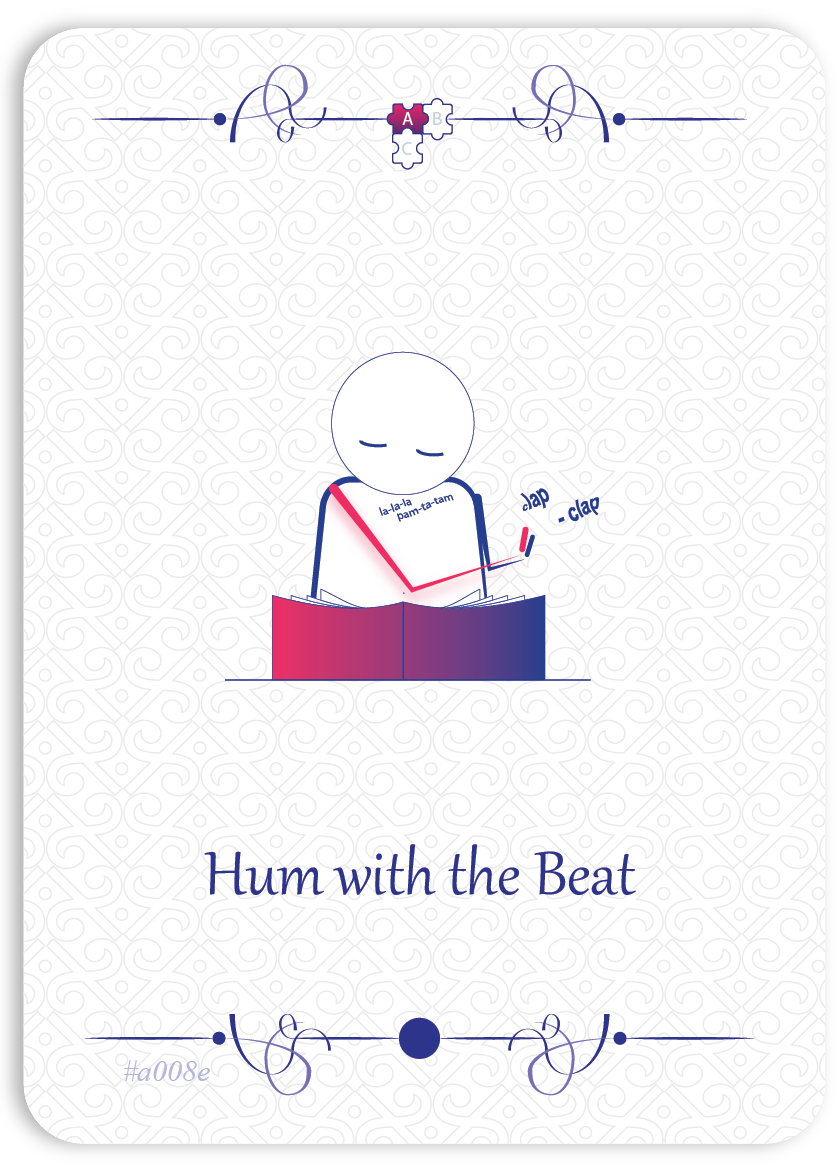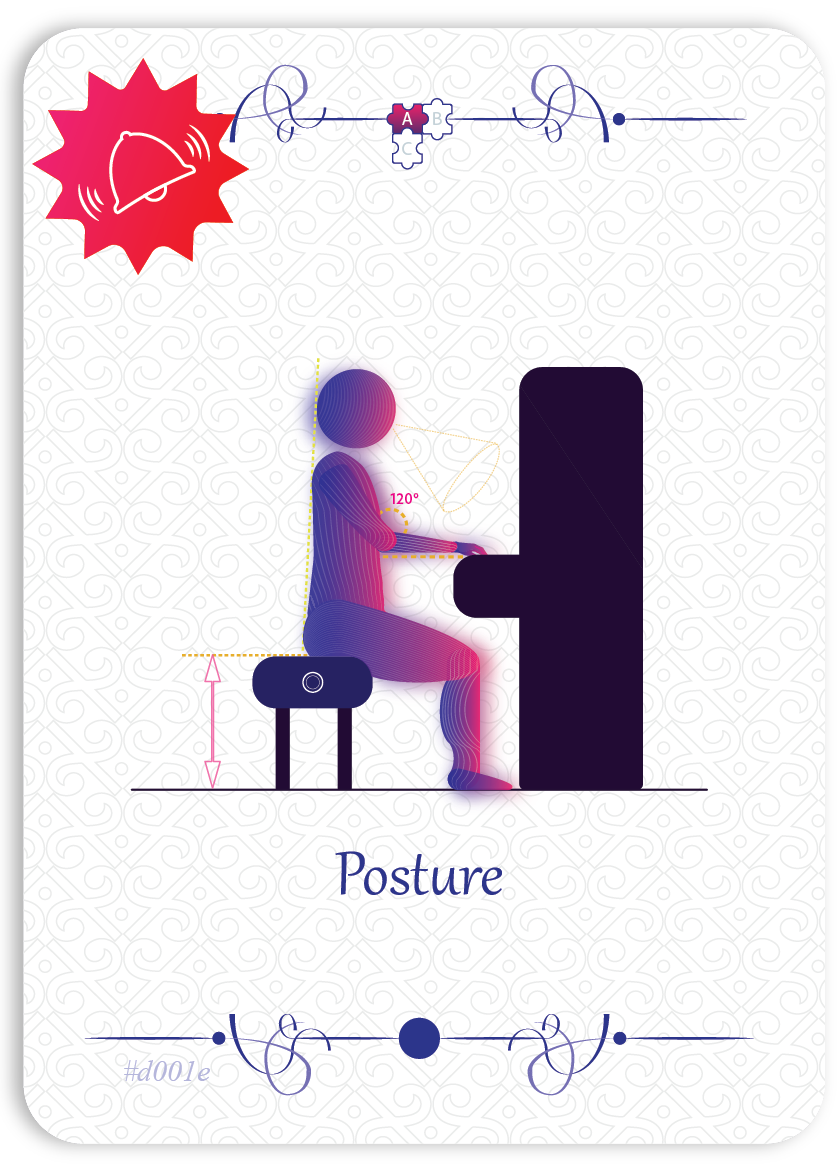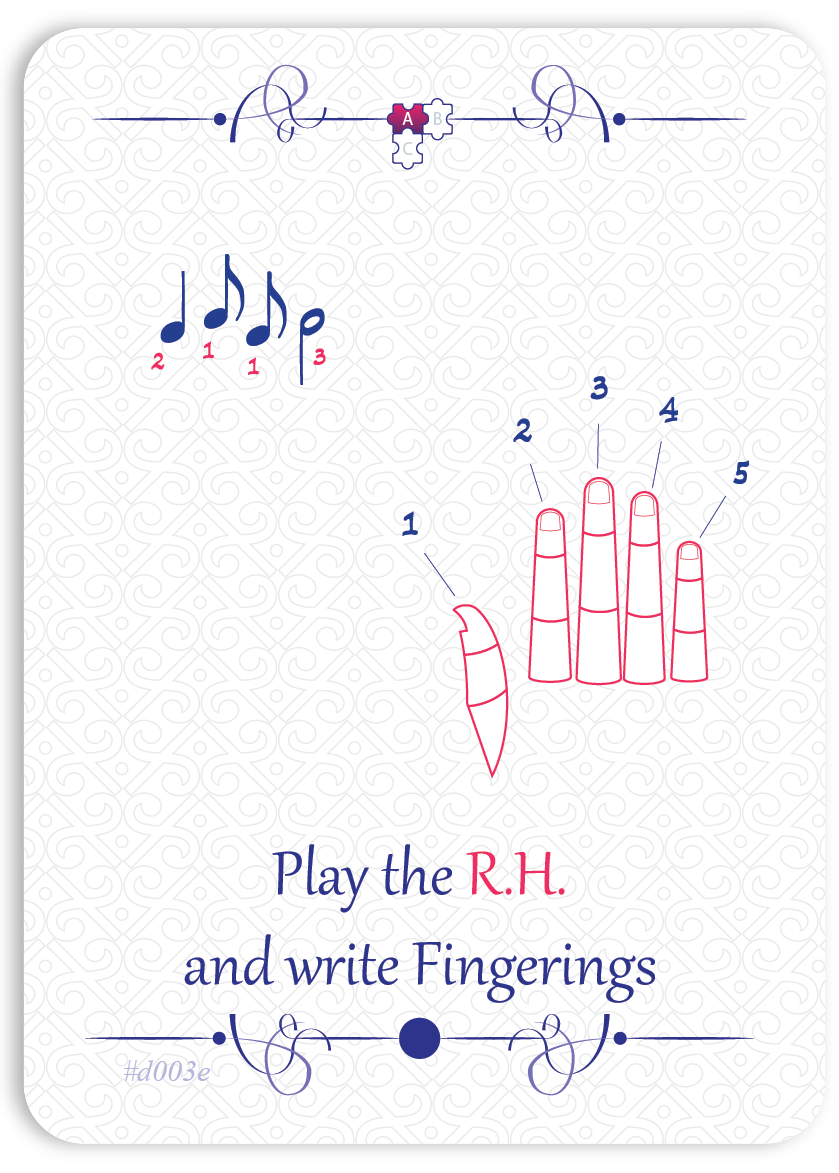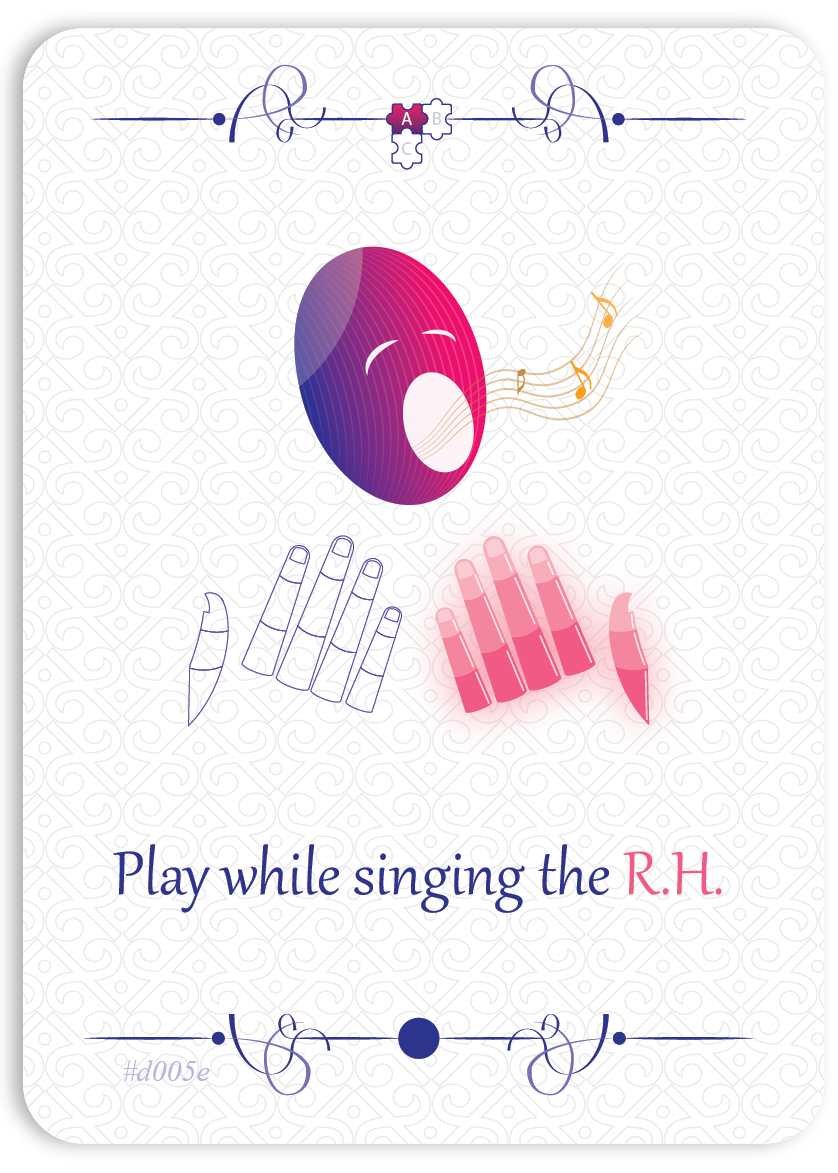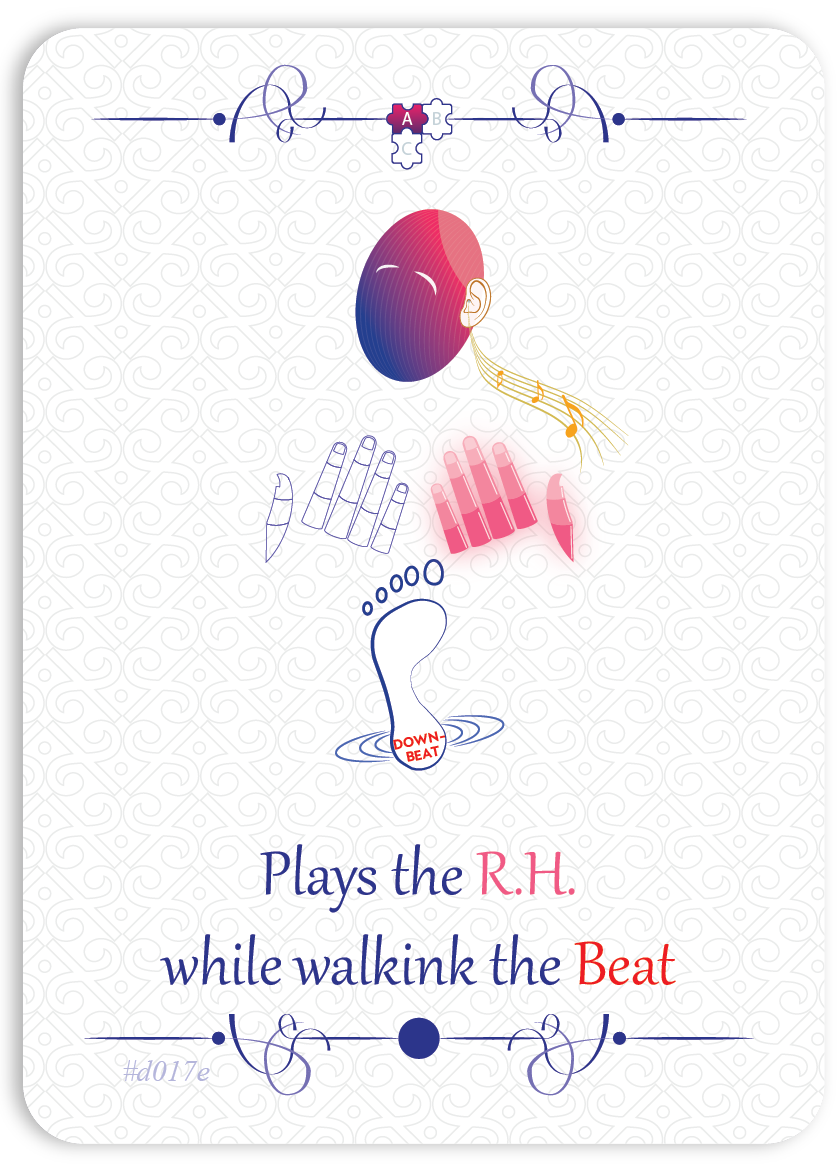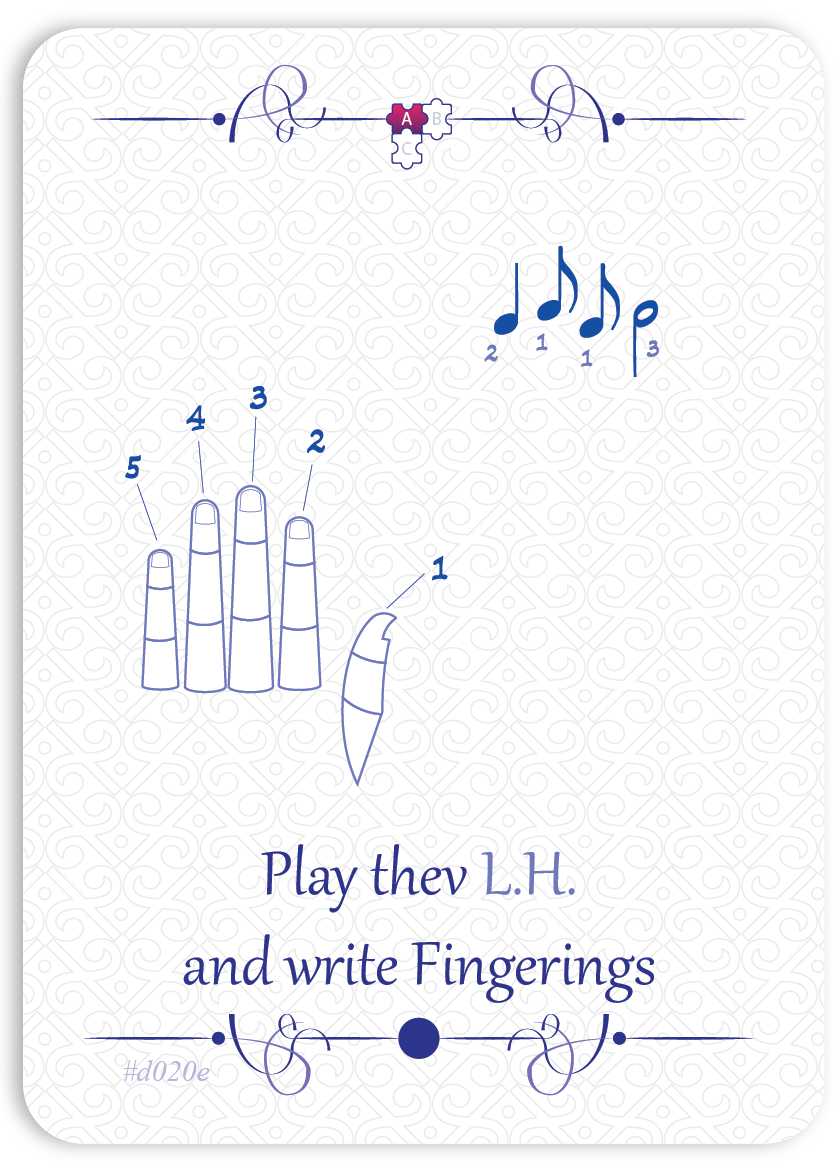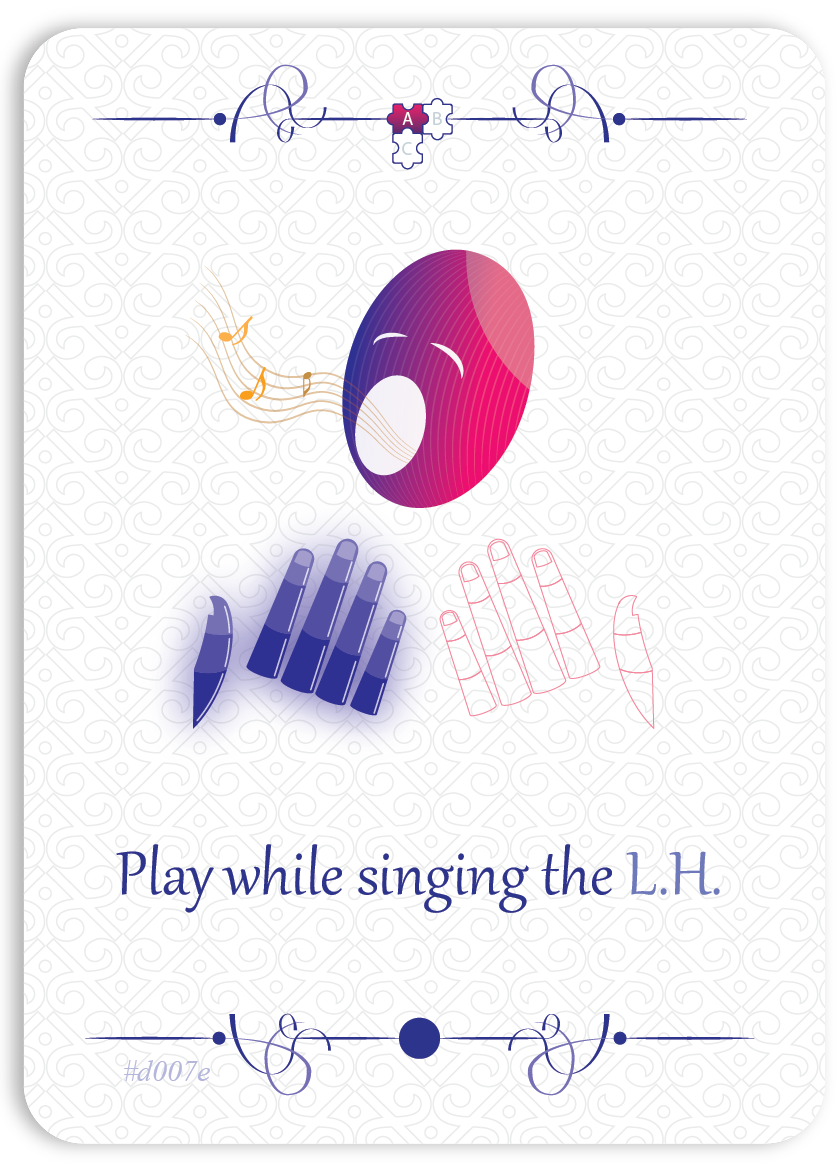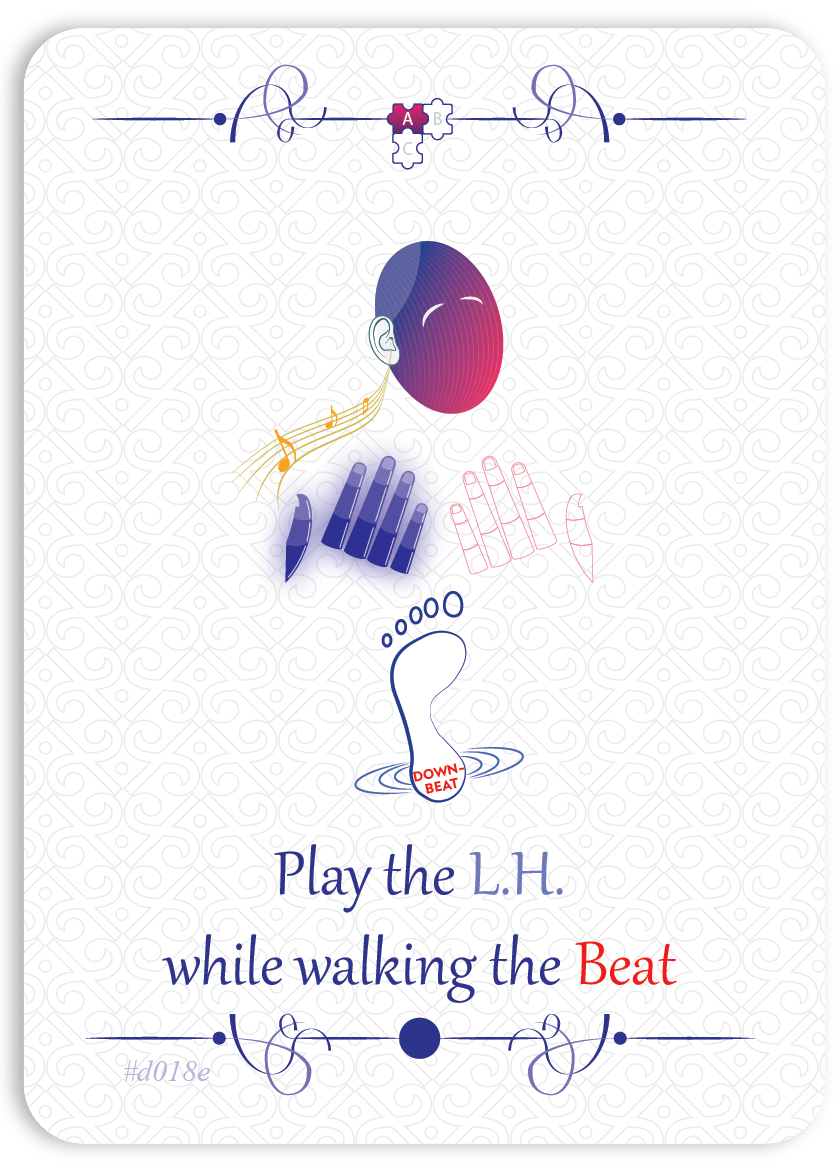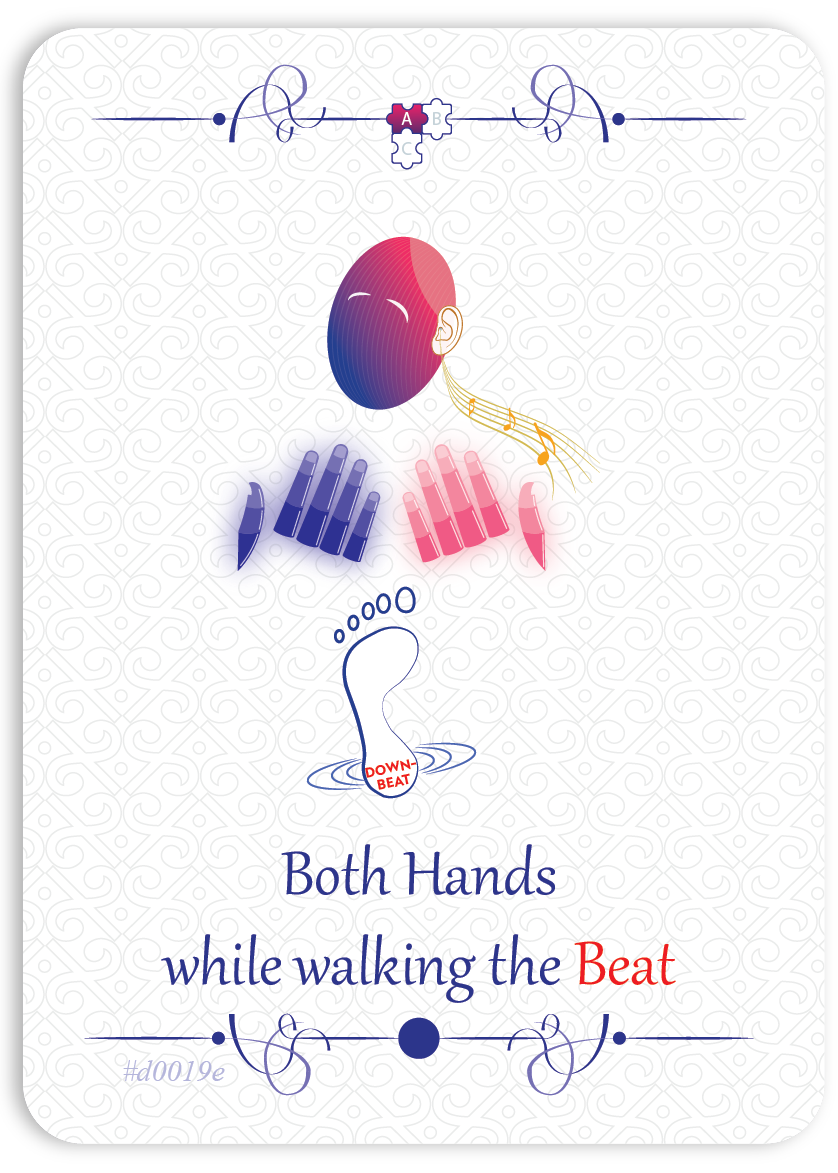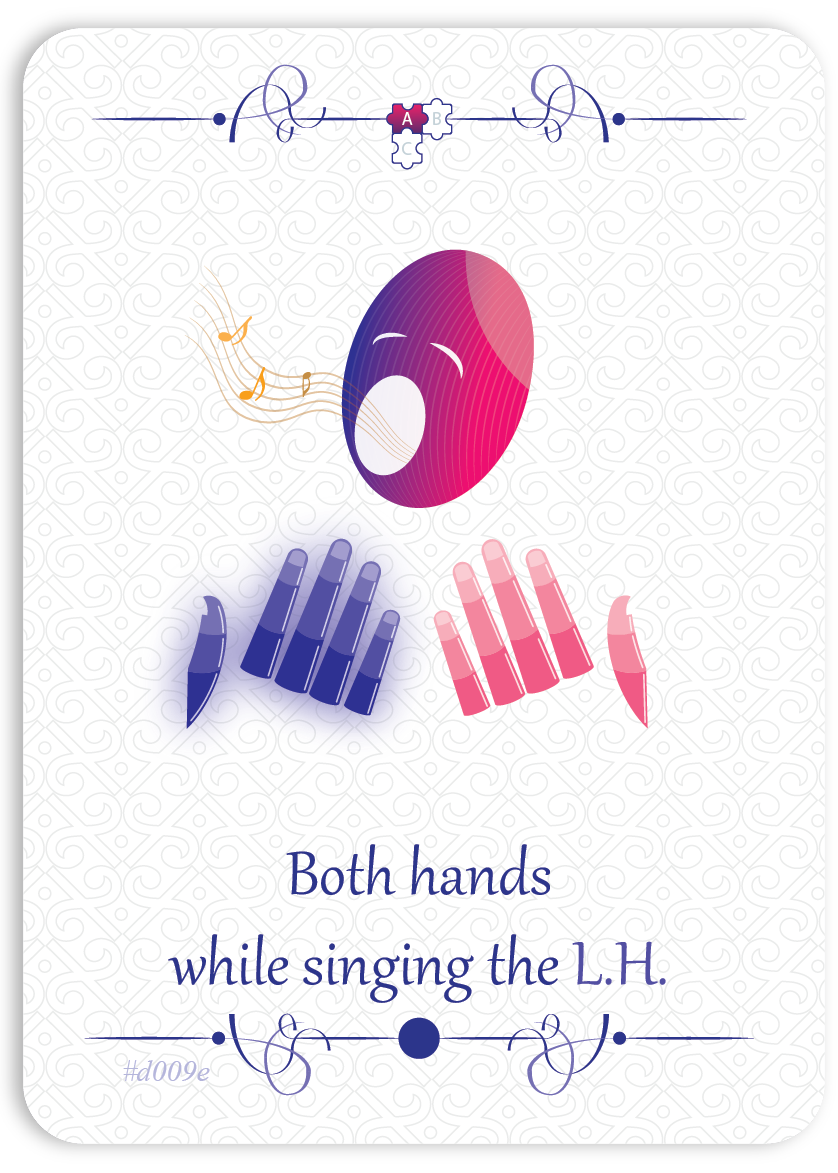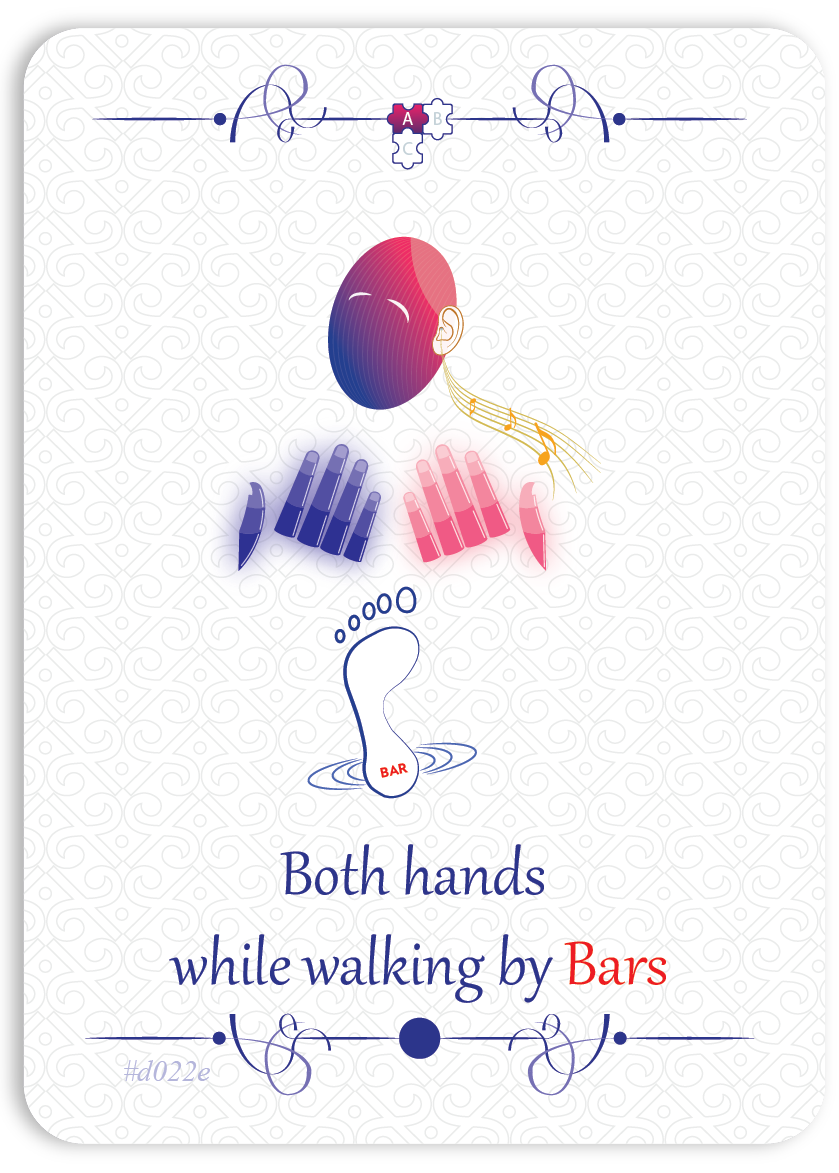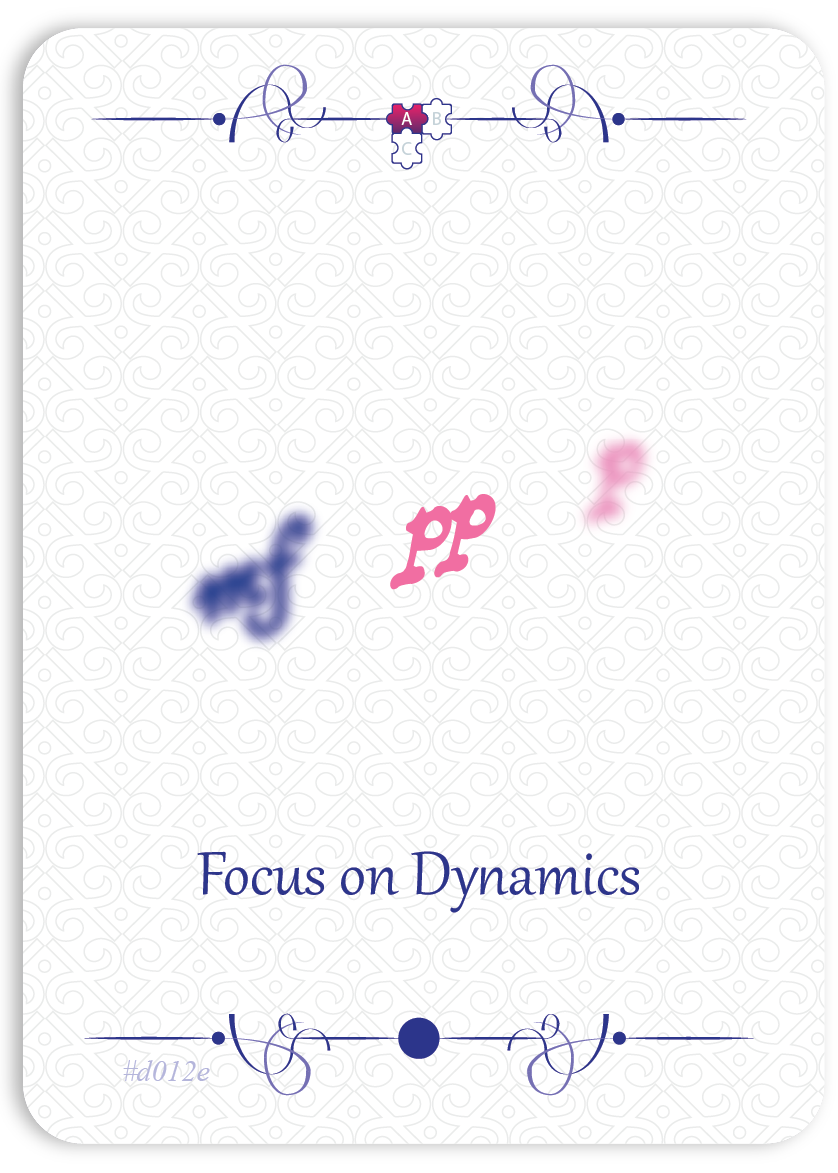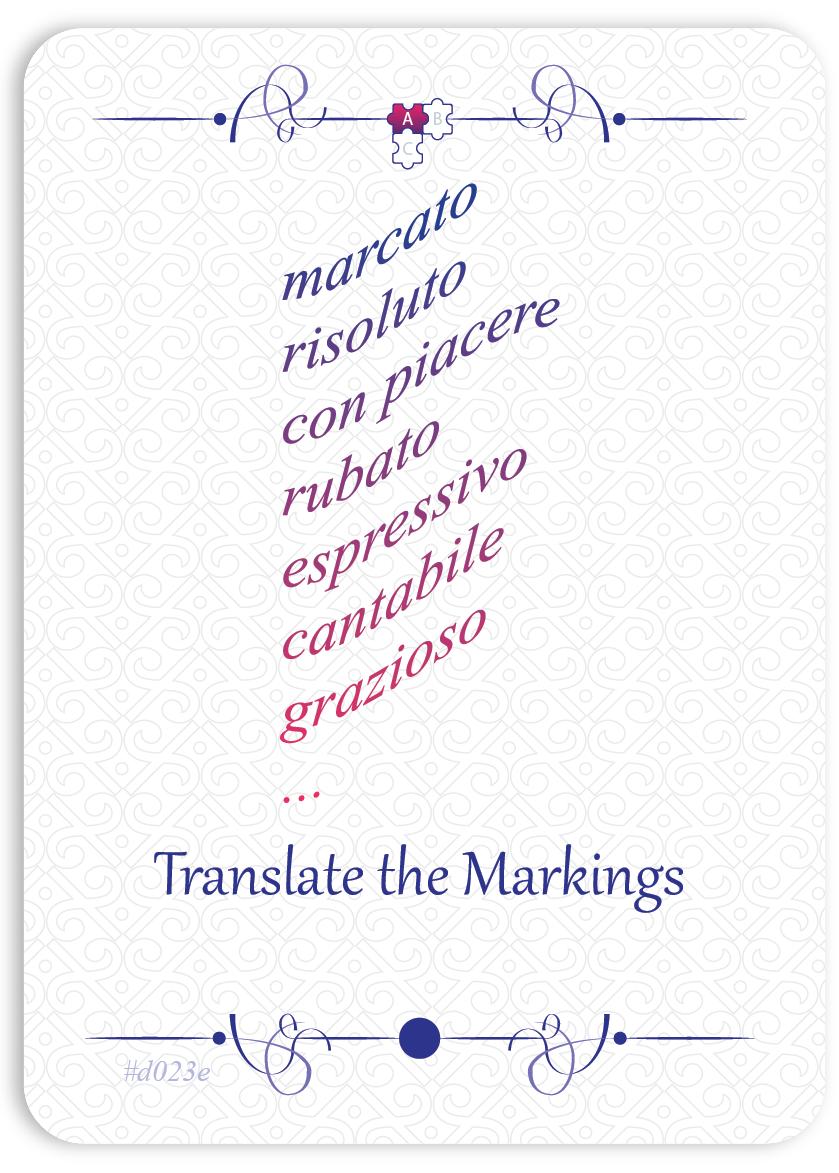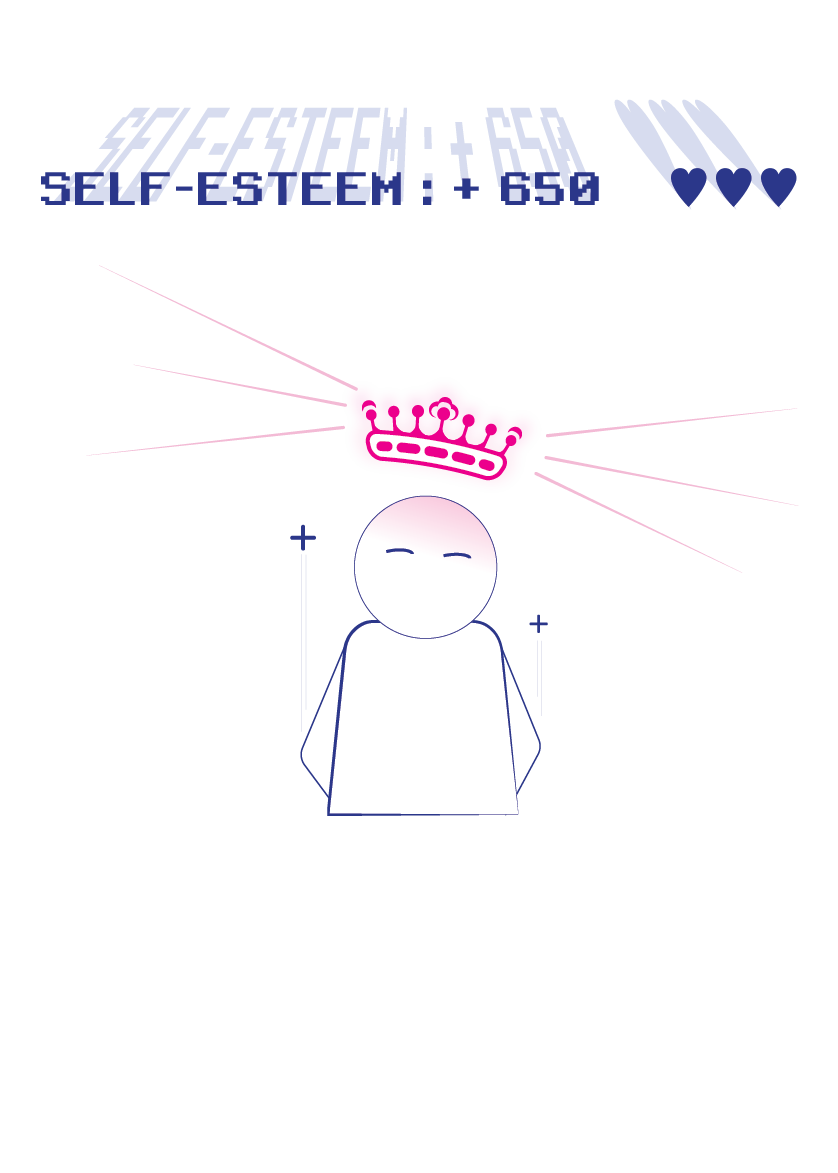Learning by fragments
A fragment is a “piece of a work or text” 1.
It is important to distinguish a fragment from a “motif,” a measure, a “phrase,” or a “period” due to its subjective nature in terms of delimitation. Here, the notion of a fragment refers to a unit (generally comprising 2 to 4 measures) that one chooses freely based on their capacity for concentration.
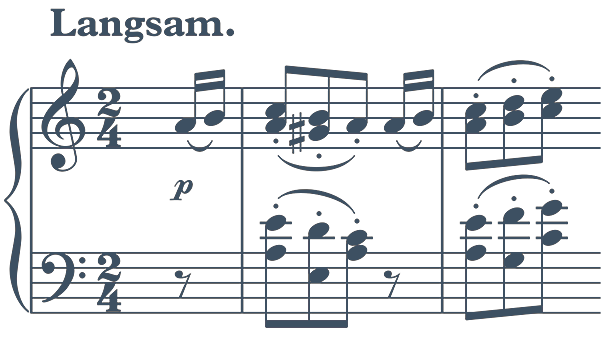
SCHUMANN ⎼ “Armes waisenkind” (Orphan), op.68 no.6, mm. 1-2
Why learn by fragments?
Learning by fragments is recommended for two reasons:
-
Because our memory is limited, it is better to focus on a small number of elements to learn 2
-
In this way, we memorize the form of the piece more precisely, which improves our ability to imagine interactions between its different parts
1 Larousse. (n.d.). Fragment. In Online Dictionary.
2 Cowan N. (2010). The Magical Mystery Four: How is Working Memory Capacity Limited, and Why?. Current Directions in Psychological Science, 19 (1), 51–57. doi.org/10.1177/0963721409359277
→ Switch from one card to another by sliding your finger over the card you see.
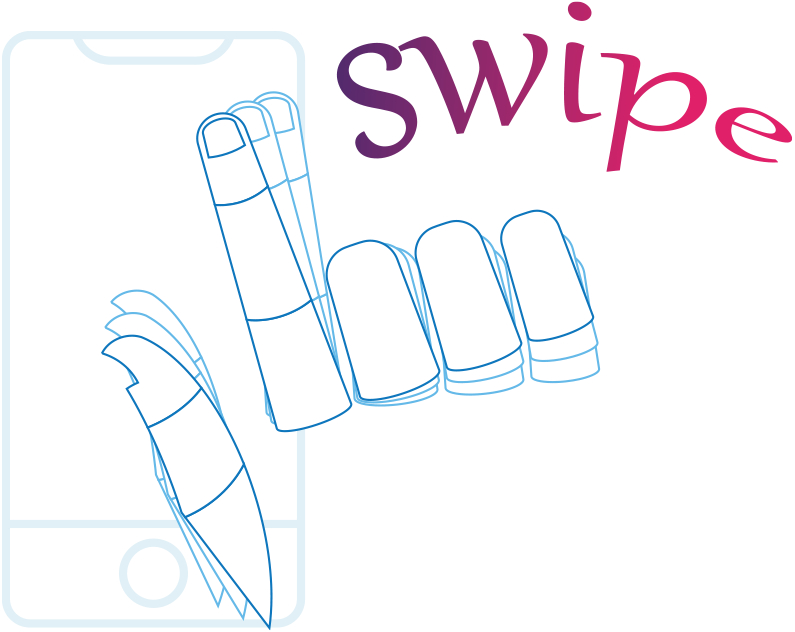
-
Description
Divided into 16 steps, this card series is specially designed to facilitate your learning of a section of the new piece you are currently working on.
It is recommended to start by carefully reading the description of each card before performing the requested exercise. During your practice, keep the card in view to focus on the instructions. Place your smartphone on the music stand and move to the next card when you feel you have completed the previous step by sliding your finger across the screen.
However, depending on your progress, you are free to spend more time on a card or skip it. For example, if you find it unnecessary to mark the beat bars, you can skip that card. Similarly, if another card gives you difficulty, you can skip it without getting stuck and continue with the following exercises.
Here is an overview of the cards awaiting you:
Meet the Requirements
Pick a Segment
Indicate the pulse
Hum with the Beat
Posture
Play the right hand and write the fingerings
Play and sing the right hand
Play the right hand while walking the pulse
Play the left hand and write the fingerings
Play and sing the left hand
Play the left hand while walking the pulse
Hands together while walking the pulse
Hands together while singing the left hand
Hands together while walking the measure
Focus on dynamics
Translate the Markings
-
Meet the Requirements
01/16
Before starting your practice session, make sure that all conditions for focus are in place.
- Trim your nails
- Put your phone on silent
- Let those around you know you need quiet
- Prepare all the materials you will need – the sheet music (tape the pages if necessary), pencils, metronome, etc.
-
Pick a Segment
02/16
It can be difficult to maintain focus over the entire new piece. That’s why we suggest considering it as a series of short musical sections. We will call these sections fragments, each containing 2 to 4 measures.
-
Choose a fragment that you will work on.
-
When applying the exercises that follow to the fragment you have chosen, stop at the first note of the next fragment (on the first beat).
-
Avoid going beyond the fragment you have decided to work on.
-
-
Indicate the pulse
03/16
Like a heartbeat, the pulse is a musical pulse that serves as a reference when we listen to music. When we play, it is important to communicate this pulse clearly; otherwise, the listener will not be able to "understand" the musical content. The first step is to identify this pulse. Place the “pulse bars” by drawing lines that cross both staves (this approach is useful because it highlights the coordination between the hands). The space between two bars must correspond to one “beat.” The time that elapses between the two pulse bars is always the same.
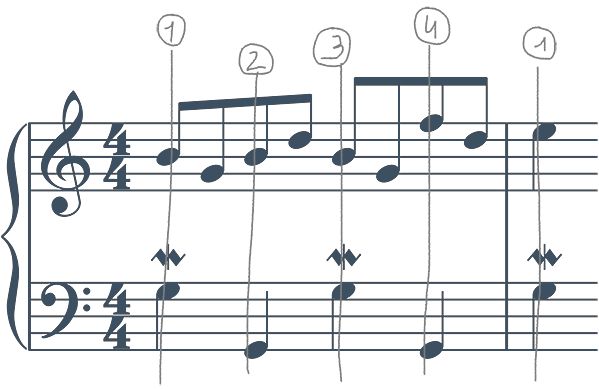
BACH – Little Prelude No. 1, BWV 939 (mm. 9) -
Hum with the Beat
04/16
Humming = Singing softly
Before playing, softly sing the melody of the section as if it were a lullaby, while keeping the pulse or conducting. This “song” will serve as a model that you will later detail and embellish using your instrument. Remember that dynamics1, articulations2, and progressions3 are part of the music.
Download the worksheets:
1 Dynamics: piano, forte, mezzo-forte, pianissimo. Also called dynamics, these are different ways to convey musical content, for example with a soft voice (piano), strong (forte), or gentle (pianissimo), etc.
Download the dynamics sheet2 Articulations: legato, staccato, tenuto. These are the different ways of connecting one note to another—smoothly (legato), detached (staccato), or paying particular attention to how the sound is held and released (tenuto).
3 Progressions: crescendo (gradually getting louder), diminuendo (gradually getting softer), accelerando (gradually getting faster), ritenuto (slowing down). These are gradual ways (little by little) to change dynamics or tempo.
-
Posture
05/16
Before placing your hands on the keyboard, make sure you are seated in a way that allows a comfortable and optimal posture for playing the piano.
Here are some tips to follow:
- Choose a stool that is firm enough (but not too hard) so your pelvis is well supported. Avoid sitting in a chair or on a sofa.
- Adjust the height of the stool and its distance from the piano so that your elbows are open at an angle of 100° to 120°.
- Imagine that the white keys extend infinitely behind you, forming a plane. Then place your elbows on this imaginary plane.
- In your mind, visualize a horizontal division of your stool and sit on the half closest to the instrument.
- Make sure your feet touch the floor. If not, use a pedal riser or a support such as a wooden box to fill the gap.
- Maintain a connection with the floor so you can stand up at any time.
- Orient your head so that it “leads” you toward the ceiling.
- Be mindful of the space between the piano and your torso. To better sense it, imagine you are holding a large ball.
-
Play Right Hand and Write Fingerings
06/16
R.H. = right hand
Writing fingerings on the sheet music is helpful for remembering hand positions on the keyboard. By repeating a passage with the same fingering, you will save a lot of time during practice.
Start by trying the fingerings already indicated on the sheet music. If they work well for you, keep them and fill in any missing fingerings for the remaining notes. If they don’t suit you, cross them out and replace them with your own fingerings.
If no fingerings are indicated, write down the first fingering that comes to mind for each note. Try it out, and adjust as needed.
Keep in mind that fingerings may change during the learning process. As you become more familiar with the piece, you might find yourself changing fingerings without realizing it. It is essential to rewrite them on the sheet music each time you discover a better solution.
-
Play while Singing the Right Hand
07/16
Sing the right-hand part using the note names while playing. Be sure to sing with attention to dynamics1, articulations2, and progressions3.
Without saying the note names out loud, play the part and try to listen internally to how the note names resonate within you.
1 Dynamics: piano, forte, mezzo-forte, pianissimo. Also called dynamics, these are different ways to convey musical content, for example with a soft voice (piano), strong (forte), or gentle (pianissimo), etc.
Download the dynamics sheet2 Articulations: legato, staccato, tenuto. These are different ways of connecting one note to another—smoothly (legato), detached (staccato), or paying special attention to how the sound is held and released (tenuto).
3 Progressions: crescendo (gradually getting louder), diminuendo (gradually getting softer), accelerando (gradually getting faster), ritenuto (slowing down). These are gradual ways (little by little) to change dynamics or tempo.
-
Play Right Hand while Walking the Beat
08/16
Play the right hand, sing, and “walk” the pulse while following the pulse bars you wrote earlier. Walking the pulse means lifting your feet alternately (one, then the other) so that each foot completely leaves the floor and then comes back into contact with the floor at the same time as the note is played and sung.
-
Play Left Hand and Write Fingerings
09/16
L.H. = left hand
Writing down fingerings in the score is helpful to remember the hand positions on the keyboard. By repeating a passage with the same fingering, you will save a lot of time during the learning process.
Start by trying the fingerings already written in the score. If you find them suitable, you can keep them and complete them by writing a fingering for each missing note. On the other hand, if they don’t work for you, cross them out and replace them with your own fingerings.
If there are no fingerings written in the score, write down the first fingering that comes to mind for each note. Try it, and then adjust if necessary.
Keep in mind that the fingering will evolve throughout the learning process. As you become more familiar with the piece, you may sometimes change your fingering without realizing it. It is essential to rewrite it in the score each time you find a better solution.
-
Play while Singing the Left Hand
10/16
The left hand is itself a broad melody, very different from that of the right hand. It is essential to be able to sing it clearly and memorize it so that it can fully support the right hand.
Sing the left-hand part while playing, naming the notes as you go. Be sure to sing with attention to the dynamics1, articulations2, and progressions3.
Without saying the note names aloud, play again and try to hear the note names resonating internally as you play.
1 Dynamics : piano, forte, mezzo-forte, pianissimo. Also called dynamic markings, these are the different ways of expressing musical content, for example with a soft voice (piano), a powerful one (forte), or a delicate one (pianissimo), etc. Download the sheet dynamics
2 Articulations : legato, staccato, tenuto. These are the different ways of moving from one note to another: smoothly connected (legato), detached (staccato), or paying special attention to how the sound is held and released (tenuto).
3 Progressions: crescendo (gradually louder), diminuendo (gradually softer), accelerando (gradually faster), ritenuto (gradually slowing down). These are gradual ways of changing dynamics or tempo step by step.
-
Play Left Hand while Walking the Beat
11/16
Play the left hand, sing, and “walk” the beat while following the beat lines you wrote earlier. Walking the beat means lifting your feet alternately (one, then the other) so that each foot comes fully off the ground and returns to the floor exactly in time with the note being played and sung.
-
Both Hands while Walking the Beat
12/16
Play with both hands together while “walking” the beat.
-
Both Hands while Singing the Left Hand
13/16
Play with both hands together while singing the left-hand part aloud.
-
Both Hands while Walking the Measure
14/16
Play with both hands together while “walking” only on the first beats of each measure.
-
Focus on Dynamics
15/16
Now focus on the details of the dynamics1.
Download the sheet dynamics
1 Dynamics : piano, forte, mezzo-forte, pianissimo. Also called nuances, these are the different ways of conveying musical expression, for example with a soft voice (piano), a powerful one (forte), or a timid one (pianissimo), etc.
-
Translate the Markings
16/16
→ Are all the indications on the score clear to me?
If there are words you don’t understand, look up the translation of all these indications and write them on your score.
Think about how these words can influence your playing and incorporate them into your interpretation.
Download the list of the most common musical terms (in Italian)
-
Well Done! 🎉
Bravo on completing this session! You’ve done a great job that will soon pay off.
Now, take a short break. After a learning session, our brain needs time to “digest” the information. Use this moment to get a glass of water, stretch, or simply look out the window.
Afterwards, move on to another fragment of your piece and return later to the one you just learned. This approach will help you better absorb the information and strengthen the skills you’ve acquired.
- Description
- Meet the Requirements
- Pick a Segment
- Indicate the pulse
- Hum with the Beat
- Posture
- Play Right Hand and Write Fingerings
- Play while Singing the Right Hand
- Play Right Hand while Walking the Beat
- Play Left Hand and Write Fingerings
- Play while Singing the Left Hand
- Play Left Hand while Walking the Beat
- Both Hands while Walking the Beat
- Both Hands while Singing the Left Hand
- Both Hands while Walking the Measure
- Focus on Dynamics
- Translate the Markings
- Well Done! 🎉
